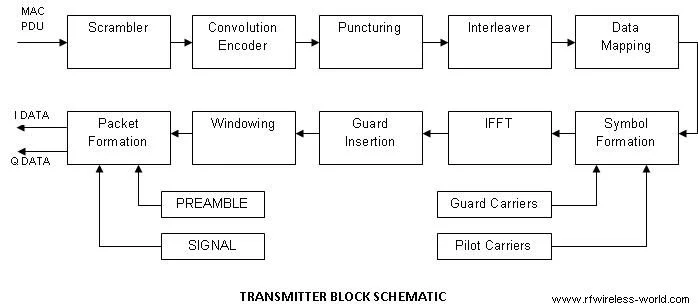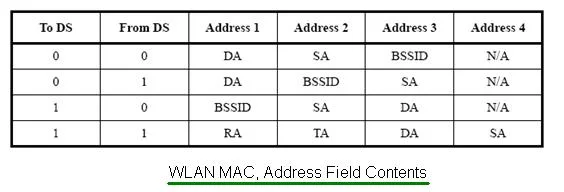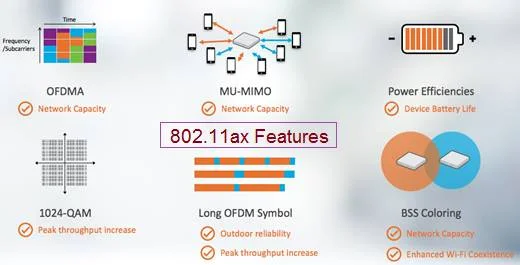Wireless LAN tutorial | WLAN tutorial
This wireless LAN (WLAN) tutorial covers wlan basics, wlan standards and wlan features. This tutorial on wireless LAN also covers different wlan flavors viz. wlan 802.11a, 11n, 11ac, 11ad and wlan 802.11ax.
Wireless LAN is the extension of LAN which is used to connect more than one computers using ethernet cables. Also referred as WLAN. LAN was not capable of providing connectivity to wireless devices such as Laptop/PDA/ipad/Mobile. Hence wireless LAN has been developed to cater to this need. Today it has become very easy to connect such devices to the existing LAN in the company/residence with the use of WLAN routers. WLAN router connects physically with LAN and it has antennas which provides connectivity with wireless devices. This Wireless devices need to have WLAN chip with protocols to avail this service. Many WLAN hotspots or kiosks are available which provide internet facility using WLAN devices.
In WLAN there are series of standards to take care of different frequencies,data rate and range such as 11a,11b,11g,11n,11ac,11ad,11af and few are evolving. These standards define physical and MAC layers. WLAn basically connects two or more than two devices using some wireless distribution method such as spread spectrum or OFDM radio. This provides WLAN users the mobility to move around within small coverage area inside office or building premises referred as cell.
Types of WLANs
Peer to peer network permits wireless devices to directly communicate with each other. There is no central device involved in the communication or providing permission to communicate. Here all the devices communicate directly without involving any central device. This is also referred as Mesh network.
In a Bridge type of LAN, bridge connects two different networks with each other. A wireless ethernet bridge allows connection of device from a wired ethernet network to the wireless network. Here bridge acts as main interface point to the WLAN.

Wirelss Distribution System (WDS)
A wirelss distribution system is a system which enables wireless interconnection of APs in IEEE 802.11 WLAN network. Ap stands for Access Point. It basically helps expand the existing WLAN network and avoids the use of any cumbersome wired backhaul network. The popularity of WDS is due to preservance of client MAC addresses as WLAN packets traverse across the links between APs.
WLAN Adhoc Mode | Infrastructure mode

In adhoc mode, WLAN wireless network is composed of only stations (802.11 compliant NICs). There will not be any access point in the network. The networked systems i.e. stations communicate directly with one another. It is also referred as IBSS(Independent Basic Service Set) or peer to peer mode.

In infrastructure mode, wlan network is composed of stations as well as one or more access points(APs). The device Access Point is like base station used in cellular system. All the communications between stations will go through AP. Access point is like a router.
WLAN Protocols
802.11-1997: Originally WLAN is introduced in 1997 and later clarified in 1999.
Two rates 1 or 2 Mbps along with FEC is specified. There are 3 PHY specified here viz. infrared at 1Mbps, FH spread spectrum at 1/2 Mbps and
DSSS at 1/2Mbps. Later it was superseded by 802.11b.
802.11a: It uses same layer-2 and frame as defined in the initial standard but it uses OFDM as modulation technique.
It operates at 5GHz frequency band and data rate of max.54Mbps can be achieved.
802.11a has smaller wavelength due to which 11a signals are absorbed more than 11b signal counterpart.
802.11b:It supports higher range but has smaller data rates max. upto 11Mbps.
It has interference issues at 2.4GHz as other technology products exist at the same band.
802.11g: It combines 11a and 11b features. It uses 2.4GHz band like 11b and OFDM modulation like 11a.
It also supports 54Mbps.
802.11n: MIMO concept is added here to increase the data rates.It supports both 2.5 GHz and 5GHz bands.
Maximum bandwidth supported here is 40MHz.
802.11ac: It operates at 5Ghz and supports bandwidth upto 80 and 160MHz to take care of
further increase in the data rates. It supports modulation scheme upto 256QAM. Max. 8 spatial streams are supported by
802.11ac standard.
802.11ad: It operates at 60 GHz frequency band and provides data rate of about 7Gbps.
802.11ax: This WLAN standard is successor to IEEE 802.11ac. In addition to higher speed,
802.11ax offers greater coverage range compare to legacy wifi networks such as 802.11a/g/n/ac.
It has advanced features such as downlink and uplink OFDMA,
Uplink resource scheduling without any contention unlike 802.11ac, MU-MIMO (DL and UL),
Long OFDM symbol, higher modulation scheme (1024-QAM), More spatial streams (up to 8),
support for 2.4 GHz and 5 GHz both, BSS coloring etc.
WLAN Physical Layer as per 802.11a

Refer WLAN physical layer as defined in IEEE 802.11a standard.
WLAN MAC Layer as per 802.11a



802.11 MAC frame is composed of header, body and FCS part.
• MAC header: It consists of frame control field, duration, address fields 1-3, sequence control field.
• Frame body: This field vary in size and consists of information based on frame type to be carried.
• FCS: stands for Frame Check Sequence, this is 32 bit CRC (i.e. cyclic redundancy code).



There are three main types of MAC frames viz. control frame, data frame and management frame based on their use
in wlan system.
Refer WLAN MAC Part-1 and
WLAN MAC Part-2 for more information.
WLAN 802.11ax

Following are the major changes made in the 802.11ax technology.
➨Guard interval and Symbol duration have been increased by factor of 4 (subcarrier offset is reduced by factor of 4).
Hence wifi signal becomes more robust for outdoor applications.
➨1024QAM has been added, hence it helps in achieving higher maximum data rates.
➨Spatial multiplexing is extended to support 8x8 MIMO
➨OFDMA has been introduced in both downlink and uplink to share OFDM subcarriers among multiple users
unlike OFDM used in previous standards where in all the subcarriers are allocated for single user. Due to OFDMA, single channel can be shared by multiple users in parallel.
➨MU (Multi-user) MIMO has been added in the uplink also where as in previous standards it was available only
in the downlink part. Hence higher throughput is achieved in the uplink through SDM (Spatial Division Multiplexing).
➨Extended range preamble is used in the frame structure.
Refer WLAN 802.11ax tutorial >> for more information.
Refer links provided in this wireless lan tutorial for understanding more insights on wlan basics.
11ac, 11ad, 11af, 11n, 11ax wlan tutorial Links
WLAN 802.11ac tutorial
WLAN 802.11ad tutorial
WLAN 802.11af tutorial
WLAN 802.11ax tutorial
WLAN 802.11n Physical layer
WLAN MAC frames Links
WLAN Association Request and response frame
WLAN authentication Request and deauthentication frame
WLAN beacon frame
WLAN passive vs active scanning frame
WLAN Probe Request and response frame
WLAN reassociation Request and response frame
WLAN RTS and CTS frame
Wireless LAN tutorial RELATED LINKS
WLAN tutorial About wlan 802.11 standards 11a WLAN PHY 11b PHY 11n PHY WLAN 802.11ac WLAN 802.11ad 11a vs 11b vs 11g vs 11n WLAN routers WLAN providers WLAN DCF vs PCF Adhoc vs Infrastructure WLAN 802.11 channels WLAN Frame Structure IR vs SS vs RF WLAN Terminology WLAN vs WiMAX
